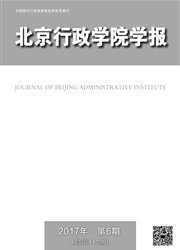

 中文摘要:
中文摘要:
高描述血浆的分发的目的敏感 C 反应的蛋白质(hsCRP ) 并且在住在中国的长寿区域的居民之中探索在 hsCRP 和新陈代谢的风险因素之间的关系。268 个个人超过 90 年在 40 和 59 年和 506 个个人之间变老的方法从中国的 5 个长寿区域被选择参予生气的节纵的队学习。参加者与一般健康被会见收集的相关问询表他们的人口统计,行为并且生活方式数据,以及他们的长期的条件,并且同时他们包括腰圆周( WC )的物理、生物医学的参数,血压( BP ), hsCRP ,血浆类脂化合物,并且 fasting 血葡萄糖( FBG )被测量。结果 hsCRP 中部在最老的老组是在中年的组和 1.76 mg/L 的 0.99 mg/L。没有重要的性差别在上述二个组之间被观察。在最老的老个人之中, 36.56% 有 hsCRP 水平 > 3.0 mg/L。高 hsCRP 的流行在中年的组是 16.79% 。逐步的多重线性回归分析的结果证明高级数据链路控制独立地与 ln ( hsCRP )被联系在中年的组的集中而 ln ( TG ),高级数据链路控制和 FBG 为性在调整以后被相关,学习地点,吸烟,喝酒,在最老的老组的教育和 BMI 。结论高级数据链路控制比在中年的人口的另外的新陈代谢的因素是提高的 hsCRP 的一个更强壮的预言者。为最老的老人,高 TG,低高级数据链路控制,和 FBG 预言提高的血浆 hsCRP。
 英文摘要:
英文摘要:
Objective To describe the distribution of plasma high sensitivity C-reactive protein (hsCRP) and explore the relationship between hsCRP and metabolic risk factors among residents living in longevity areas of China. Methods 268 individuals aged between 40 and 59 years and 506 individuals aged over 90 years were selected from 5 longevity areas of China to participate in a cross section longitudinal cohort study. The participants were interviewed with general health related questionnaire to collect their demographic, behavioral and lifestyle data, as well as their chronic conditions, and meanwhile their physical and biomedical parameters including waist circumference (WC), blood pressure (BP), hsCRP, plasma lipids, and fasting blood glucose (FBG) were measured. Results The median of hsCRP was 0.99 mg/L in the middle-aged group and 2.76 mg/L in the oldest old group. No significant gender difference was observed between the above two groups. Among the oldest old individuals, 36.56% had an hsCRP level 〉3.0 mg/L. The prevalence of high hsCRP was 26.79% in the middle-aged group. The results of stepwise multiple linear regression analyses showed that HDL-C was independently associated with In (hsCRP) concentration in the middle-aged group, whereas In (TG), HDL-C and FBG were correlated after adjustment for gender, study site, smoking, drinking, education and BMI in the oldest old group. Conclusion HDL-C is a stronger predictor of elevated hsCRP than other metabolic factors in the middle-aged population. For the oldest old persons, high TG, low HDL-C, and FBG predict elevated plasma hsCRP.
 同期刊论文项目
同期刊论文项目
 同项目期刊论文
同项目期刊论文
 期刊信息
期刊信息
